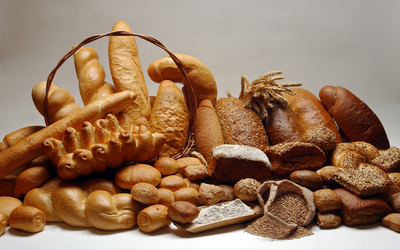By now you must know your bread basics; whole grain is the Mack Daddy of nutrition, while white, refined bread is more devoid of goodness than Freddy Krueger. That said, why is it so difficult to tell which bread is best for your wellbeing when you’re at the supermarket? In any given bread aisle, you’ll see whole wheat, multi-grain, seven-grain, 12-grain, all natural, organic and enriched, to name a few, but this isn’t giving you as much of a choice as you think. Unfortunately, loose labeling laws allow these “Kruegers” to masquerade as “Mack Daddies” all the while doing nothing for your wellness, and leaving you unaware. So, how do you beat the system, and still come out on top with the very best bread?
Don’t settle for less than 100%. On the packaging, look for the term “100% whole grain” or “100% whole wheat”– either one is fine as whole wheat is a whole grain. Most whole grain breads are primarily made with wheat anyway, but if you’d rather have a mix of grains then you need to check the list on the label. The order the ingredients are listed shows how much they feature within the loaf (wheat, oats, flax seeds, barley, buckwheat, etc). If you see terms like “Wheat” or “Multigrain” that don’t mention a percentage, put the package down and step away slowly. While these breads sound healthy, the chances are that they’re made with partially or mostly refined white flour. For example, 75% of wheat flour is actually white flour and only 25% is whole wheat.
Eliminate enriched. That’s a great word – enriched – as it covers all manner of sins. All this term means is that the manufacturer as added nutrients to an otherwise nutrient-free, white bread. These synthetic nutrients (yum) have been added to replace the natural ones that have been lost in the milling process – it’s like the bread equivalent of putting lipstick on a pig.
Understand the benefits. 100% whole grain breads can reduce your risks of stroke, diabetes, heart disease, asthma and colorectal cancer, as well as giving your body a powerful punch of protein, fibre, B vitamins and many other nutrients that help to lower your blood pressure, strengthen your immune system and maintain your weight. Other breads, on the other hand, have been cleared of all these nutrients, and even raise your risk for diseases like diabetes.
